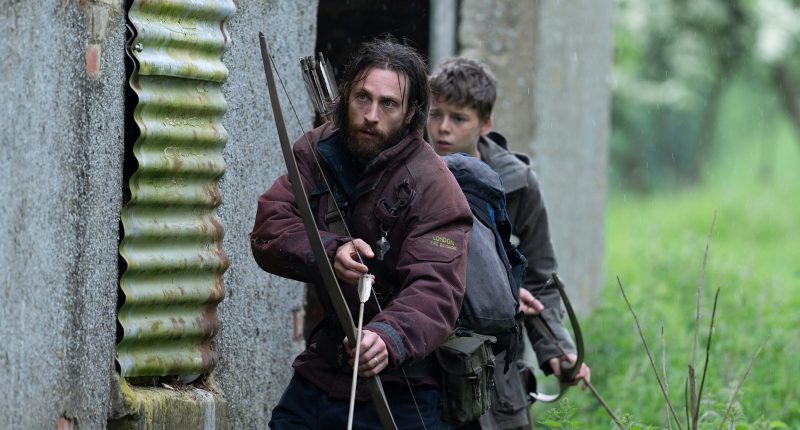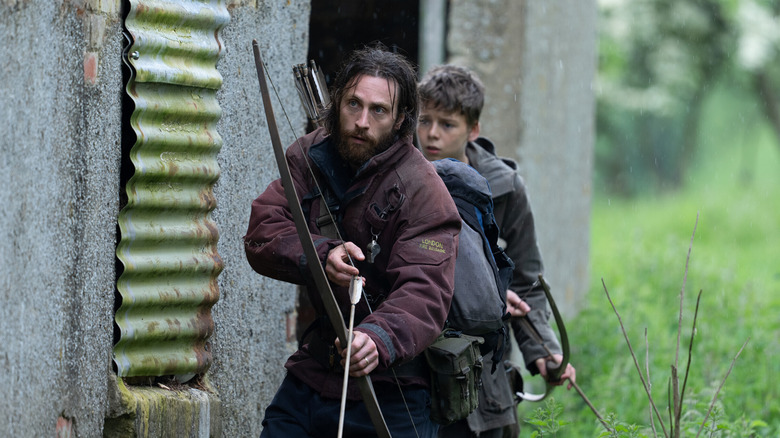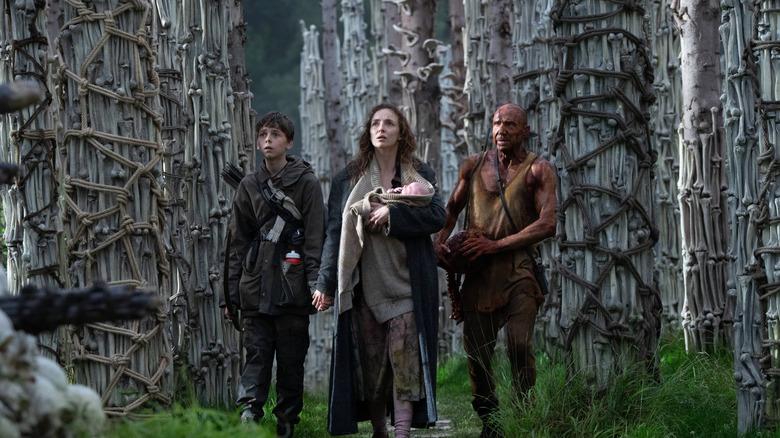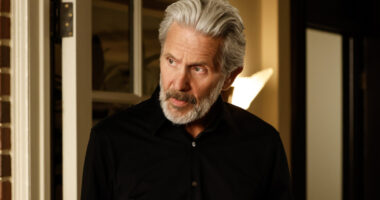Share this @internewscast.com
RATING : 9 / 10
- Great performances, especially by Jodie Comer and Ralph Fiennes
- Lovely cinematography
- Brilliant direction and writing
- The coda is discordant with the rest of the film
Before experiencing “28 Years Later,” my expectations were tempered as the world has changed significantly since “28 Days Later” premiered in 2002. While “Night of the Living Dead” set the foundation in the late ’60s, “28 Days Later” brought a new dimension to the undead narrative with its portrayal of fast, agile creatures prowling through London. Danny Boyle’s film was groundbreaking, emphasizing that the true horror often lies in human nature—a theme that other zombie narratives have explored extensively, notably in the 11-season epic “The Walking Dead.” I was skeptical that “28 Years Later” could match the originality of its predecessor. After all, in the two decades since, the zombie genre seems to have exhausted its storytelling potential.
I’m pleased to admit that my skepticism was misplaced. “28 Years Later” may not revolutionize the genre like “28 Days Later,” but director Danny Boyle and writer Alex Garland have cleverly revisited familiar themes with a fresh perspective. One notable example is the use of Rudyard Kipling’s poem “Boots,” recited by Taylor Holmes in 1915, which features prominently in the film as it did in its trailers. In the movie, the poem serves as a narrative device, juxtaposing zombie battles with historical wartime scenes, including the First and Second World Wars and even scenes styled to resemble the Middle Ages. This draws a parallel between our perennial conflicts and their possible valor or futility, offering a novel angle in zombie cinema. The battlefield analogy is a new addition to the genre’s repertoire, and “28 Years Later” deftly highlights its relevance.
Other elements contribute to the film’s success, notably Anthony Dod Mantle’s stunning cinematography. Dod Mantle, who also worked on “28 Days Later,” returns, bringing a visual elegance to the otherwise grim narrative. Despite the film’s bleakness, his beautifully composed shots enhance the viewing experience, demonstrating once again how essential his artistry is to the film’s impact.
The team also has more money for this movie — a lot more. Both Boyle and Garland’s profiles have risen considerably; in the years between “28 Days Later” and “28 Years Later,” Boyle has directed the Academy Award winner “Slumdog Millionaire,” and Garland has become a director with films like “Civil War” and “Ex Machina” under his belt. And they’ve been rewarded with millions of more dollars to shoot this movie than they had on the first, or even the Boyle- and Garland-executive-produced “28 Weeks Later” (the sequel that came out in 2007 and was directed by Juan Carlos Fresnadillo). All that money is on the screen with wide shots galore and intricate close-ups of the infected.
The story is told in two acts
The movie is divided into two acts: one where 12-year-old Spike (Alfie Williams) spends time with his father (Aaron Taylor-Johnson) and the other with his mother (Jodie Comer, in a brilliant performance). While places like France and Sweden have beaten the zombies back and moved on, the U.K. has not. As a result, the country is under quarantine — no one goes in or out, and those left must fend for themselves. As the movie starts, Spike, who has never known any other world, is preparing to visit the mainland with his dad, Jamie. The pair lives on an island in the Atlantic Ocean that is connected to the mainland by a causeway visible only at low tide.
On the mainland, Spike kills a couple of the infected with a bow and arrow and then freezes when a roving band of zombies comes after them, with his father virtually dragging him up the causeway toward home. But they make it and manage to get to the party the village has organized for Spike, where Jamie tells tall tales of Spike’s heroics on the mainland.
Spike is perplexed by Jamie’s lies and upset because he sees him with a woman who is not his mother. So Spike ditches the party and goes home, where he spends time with his mom, Isla, who’s suffering from an unknown affliction. When he was on the mainland, Spike saw a fire burning, and he discovers that the fire marks where a doctor is staying. His father tells him that the doctor, Kelson (Ralph Fiennes, who’s also fantastic in his role), is not to be trusted, but Spike wants to get his mother to him; after all, she’s sick, and there hasn’t been a doctor on the island in years. So Spike and Isla set out to the mainland. There they see many things, and meet Dr. Kelson in a sad, strange, hopeful second half of the film.
Zombies are the real threat
Unlike the military contingent in “28 Days Later,” the people in “28 Years Later” are surprisingly nice. Even the one military man Spike and Isla meet, Eric (Edvin Ryding), is grumpy but pleasant for the most part — at least until the circumstances they’re in make that impossible. Though there are multiple shots of people (particularly kids) throughout the movie hiding under grates, this is to escape zombies, not other people. The movie seems to be saying, “trust one another and focus on the real enemy.”
Then come the final moments of the film, where Spike meets Jimmy Crystal (Jack O’Connell), the grown-up version of a little boy that was shown at the very beginning of the movie, and his band of deadly zombie killers. They finish off a band of fast-moving zombies for Spike, continuing the theme, but Spike notices that Crystal wears an upside-down cross necklace. Hmm … this is clearly setting up the next film, “28 Years Later: The Bone Temple,” which will be directed by Nia DaCosta and may introduce us to the other side of the coin in this cult of fair-haired saviors. (We’ll see if that movie blows us away, too, when it premieres in 2026.)
But for now, we’re left with an affecting tale of a boy and how he navigates his mother’s illness and the zombies that have become a necessary part of daily life. “28 Years Later” is scary and touching and funny and brutal, and I loved every minute of it.
“28 Years Later” opens in movie theaters on June 20. If you’re looking for a rundown of everything that’s happened in the franchise up until this point, you need to check out Looper’s recap.









